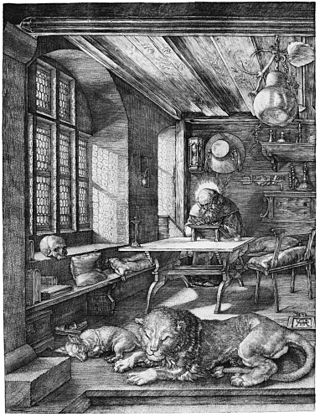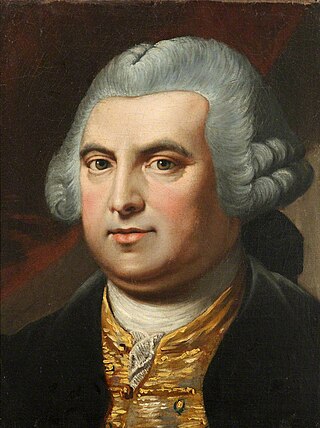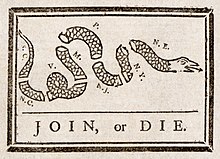
Paul Revere was an American silversmith, military officer and industrialist who played a major role during the opening months of the American Revolutionary War in Massachusetts, engaging in a midnight ride in 1775 to alert nearby minutemen of the approach of British troops prior to the battles of Lexington and Concord.

Engraving is the practice of incising a design on a hard, usually flat surface by cutting grooves into it with a burin. The result may be a decorated object in itself, as when silver, gold, steel, or glass are engraved, or may provide an intaglio printing plate, of copper or another metal, for printing images on paper as prints or illustrations; these images are also called "engravings". Engraving is one of the oldest and most important techniques in printmaking. Wood engravings, a form of relief printing and stone engravings, such as petroglyphs, are not covered in this article.

Sterling silver is an alloy composed by weight of 92.5% silver and 7.5% other metals, usually copper. The sterling silver standard has a minimum millesimal fineness of 925.
Robert Scot (October 2, 1745 – November 3, 1823) was a Scottish-American engraver who served as Chief Engraver of the United States Mint from 1793 until his death in 1823. He was succeeded by William Kneass. Scot designed the popular and rare Flowing Hair dollar coinage along with the Liberty Cap half cent. Scot is perhaps best known for his design, the Draped Bust, which was used on many silver and copper coins. Robert Scot was the most prolific engraver of early American patriotic iconography, with symbols and images depicting rebellion, unity, victory, and liberty throughout his career in America.

The Gobrecht dollar, minted from 1836 to 1839, was the first silver dollar struck for circulation by the United States Mint after production of that denomination had been halted in 1806. The coin was struck in small numbers to determine whether the reintroduced silver dollar would be well received by the public.

Amos Doolittle was an American engraver and silversmith, known as "The Revere of Connecticut." His engravings included portraits and maps, made in his New Haven, Connecticut studio. He became famous for his four engravings depicting the Battles of Lexington and Concord, which were based on his first-hand reconnaissance of the battlefield.

James Hamilton, son of the British-born lawyer Andrew Hamilton who was active in the Thirteen Colonies, was also a lawyer and governmental figure in colonial Philadelphia and Pennsylvania. He served two terms as deputy governor of the Province of Pennsylvania from 1748 to 1754 and from 1759 to 1763. From 1745 to 1747, he was the mayor of Philadelphia

The three-dollar piece was a gold coin produced by the United States Bureau of the Mint from 1854 to 1889. Authorized by the Act of February 21, 1853, the coin was designed by Mint Chief Engraver James B. Longacre. The obverse bears a representation of Lady Liberty wearing a headdress of a Native American princess and the reverse a wreath of corn, wheat, cotton, and tobacco.

Jeremiah Dummer was an American silversmith, painter, and engraver. He created the first paper currency in the Connecticut Colony, and his son Jeremiah Dummer was involved with the foundation of Yale University.

James Barton Longacre was an American portraitist and engraver, and the fourth chief engraver of the United States Mint from 1844 until his death. Longacre is best known for designing the Indian Head cent, which entered commerce in 1859, and for the designs of the Shield nickel, Flying Eagle cent and other coins of the mid-19th century.
The coats of arms of the U.S. states are coats of arms, that are an official symbol of the state, alongside their seal. Eighteen states have officially adopted coats of arms. The former independent Republic of Texas and Kingdom of Hawaii each had a separate national coat of arms, which are no longer used.

Nathaniel Hurd is recognized as the first American engraver and a silversmith in Boston, Massachusetts, in the 18th century. He engraved "bookplates ... heraldic devices, seals, ... paper currency, and business cards" along with die engravers and engravers on copper.

Sidney Lawton Smith (1845–1929) was an American designer, etcher, engraver, illustrator, and bookplate artist.
In early 18th century Colonial America, engravers began experimenting with copper plates as an alternative medium to wood. Applied to the production of paper currency, copper-plate engraving allowed for greater detail and production during printing. It was the transition to steel engraving that enabled banknote design and printing to rapidly advance in the United States during the 19th century.

Charles William Sherborn, was an English engraver, who chiefly made bookplates. He has been hailed as having led the revival in copper-engraved bookplates, and came to be called the "Victorian little master".
Thomas Johnston was an American engraver, japanner, and heraldic painter in Colonial Boston. Johnston engraved the first print of an historical event in the Colonial America and was also the first manufacturer of church organs in the colonies. The pipe organ he built in 1758–1759 for Boston's Old North Church was in use for over a hundred years until another organ replaced it in 1886.

Peter Rushton Maverick was an American engraver and silversmith, active in New York City and perhaps Newark, New Jersey. His son, Peter Maverick (1780–1871), also became a well-known printmaker, and his other students included Francis Kearney.

Nathaniel Richardson was an American silversmith, active in Philadelphia.

Jacob Hurd was a leading American silversmith, active in Boston, and father to silversmiths Nathaniel Hurd (1729-1777) and Benjamin Hurd (1739-1781), as well as grandfather to Benjamin Hurd Jr. (1778-1818).

Martha Lou Gandy Fales was an American art historian, museum curator, and author specializing in historic American silversmithing and jewelry. She worked as a curator and keeper of the silver at the Winterthur Museum, Garden and Library during the late 1950s and worked mostly as an independent historian and consultant after that. Her seminal book Jewelry in America (1995) received the Charles F. Montgomery Prize from the Decorative Arts Society.

















